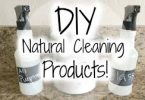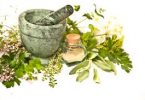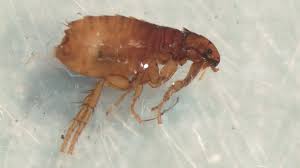 Fleas can be an annoyance to humans and a nuisance to your pet. They can transmit tapeworms and can cause severe cases of anemia, especially in young animals.
Fleas can be an annoyance to humans and a nuisance to your pet. They can transmit tapeworms and can cause severe cases of anemia, especially in young animals.
Fighting a flea infestation can be challenging and seem impossible to alleviate. So in order to help you wage natural war on these pesky parasites lets take a look at their life cycle.
Fleas have a four stage life cycle:
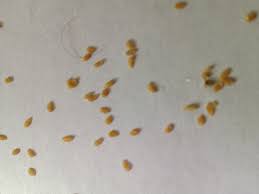 Stage 1-The egg. Adult fleas lay eggs on your pet-approx. 20 to 28 per day. These eggs drop off your pet and can grow wherever they land…on your furniture, carpets, bedding, throw rugs and other types of flooring, even wood and ceramic tiles.
Stage 1-The egg. Adult fleas lay eggs on your pet-approx. 20 to 28 per day. These eggs drop off your pet and can grow wherever they land…on your furniture, carpets, bedding, throw rugs and other types of flooring, even wood and ceramic tiles.
 Stage 2-The egg then turns into little, worm like creatures known as larva. Larva hatch from flea eggs.
Stage 2-The egg then turns into little, worm like creatures known as larva. Larva hatch from flea eggs.
 Stage 3-The larvae forms a pupae, a cocoon, inside which it moves through additional growth stages and can take anywhere from 10 days all the way up to 200 days to complete.
Stage 3-The larvae forms a pupae, a cocoon, inside which it moves through additional growth stages and can take anywhere from 10 days all the way up to 200 days to complete.
 Step 4- Adult fleas evolve from the pupae and that’s what you see on your pet. They live on average about 6 weeks, but they can live a whole lot longer than that. The only way to remove adult fleas is to kill them or pick them off.
Step 4- Adult fleas evolve from the pupae and that’s what you see on your pet. They live on average about 6 weeks, but they can live a whole lot longer than that. The only way to remove adult fleas is to kill them or pick them off.
Fleas reproduce at an incredible rate. Ten female fleas can produce over 250,000 more fleas in a single month. Estimates are that for every adult flea on your pet, there are around 10 more wherever your pet spends time. That’s why you need to eliminate not only the adult fleas on your pet, but the larva and pupae in your home, your yard and your pets bedding. The pupae stage is the most problematic because the cocoon is resistant to agents that can kill fleas in the other stages of the life cycle.
The only way to eliminate pupae is by vacuuming them up and disposing of the contents right away outside of your house, not in your kitchen or garage garbage can. Even if you manage to kill all the adults, if you don’t kill the pupae they will hatch into adults.
It takes about 45 days of diligent effort to fully resolve a flea infestation.
Parasites are drawn to the weakest of the species. So the first battle is to ensure that your pet is healthy and their immune system strong.
Feed your pet a high quality, species appropriate diet, (see the diet area of the website for additional education). It is the foundation of your pets health and well being. Exercise your pet to keep them at a healthy weight and to keep their joints strong and their muscles toned. Over vaccinating your pet can devastate your pets immune system, as well as the overuse of antibiotics and corticosteroids which many conventional vets over prescribe for itching and allergies.
Flea Removal in your Home
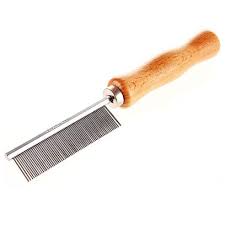 Flea Comb-The most important weapon in your flea arsenal is the flea comb. Flea combing is one of the safest and best methods for removing adult fleas. Comb your dog at least once daily on a white towel so you can see what your removing. Drop the combings into a bowl of soapy water and flush it down the toilet when you are done combing. Even if you don’t see fleas or flea dirt on your pet, it’s a good idea to continue combing daily until you are sure the environment is completely flea free. Flea combs can be purchased at Walmart or your local pet or feed store. There are numerous styles but I find this basic type works best for me.
Flea Comb-The most important weapon in your flea arsenal is the flea comb. Flea combing is one of the safest and best methods for removing adult fleas. Comb your dog at least once daily on a white towel so you can see what your removing. Drop the combings into a bowl of soapy water and flush it down the toilet when you are done combing. Even if you don’t see fleas or flea dirt on your pet, it’s a good idea to continue combing daily until you are sure the environment is completely flea free. Flea combs can be purchased at Walmart or your local pet or feed store. There are numerous styles but I find this basic type works best for me.
Vacuum-Vacuum all the areas in your house that your pet has access to. It’s vital to remove the fleas in their various growth stages so they don’t develop into adults. Vacuum your carpet, rugs, bare floors, baseboards, furniture, around furniture crevices, pillows and bedding. Vacuum in dark places under furniture and beds, and in closets. Empty the vacuum cleaner bag immediately, away from your house.
Flea accumulations are often where your pet sleeps, so limit his sleeping areas to make things a little easier for you until you get fleas under control.
Pet bedding should be vacuumed on a daily basis and washed frequently in hot water and bleach.
Treat Your Environment-Chemical products should be used as a last resort. There are plenty of safer alternatives to try.
 Diatomaceous Earth-You can apply a light dusting of food grade DE on your carpets, bare floors, your pet and his bedding. Make sure the DE is food grade, not pool filter grade which can be toxic if ingested. It is a powder that kills fleas by dehydrating them from the outside in. You may place this product directly on your pets skin and coat and in their food.
Diatomaceous Earth-You can apply a light dusting of food grade DE on your carpets, bare floors, your pet and his bedding. Make sure the DE is food grade, not pool filter grade which can be toxic if ingested. It is a powder that kills fleas by dehydrating them from the outside in. You may place this product directly on your pets skin and coat and in their food.
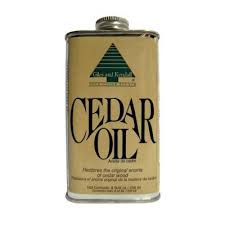 Cedar Oil-Cedar oil can be applied to the environment, pet bedding and even your pet. It is an all natural insect repellent.
Cedar Oil-Cedar oil can be applied to the environment, pet bedding and even your pet. It is an all natural insect repellent.
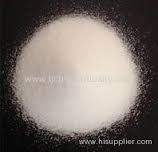 Sodium Polyborate Powder- You can apply this powder to the environment to kill fleas in the larvae stage. Keep children and pets out of the room while applying it, but they can enter the area safely right afterwards. The powder works for a year once it’s applied unless you have your carpets steam cleaned.
Sodium Polyborate Powder- You can apply this powder to the environment to kill fleas in the larvae stage. Keep children and pets out of the room while applying it, but they can enter the area safely right afterwards. The powder works for a year once it’s applied unless you have your carpets steam cleaned.
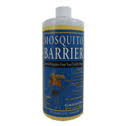 Mosquito Barrier-This is an all natural, liquid garlic based solution that can be sprayed on your lawn. It lasts about 1 month.
Mosquito Barrier-This is an all natural, liquid garlic based solution that can be sprayed on your lawn. It lasts about 1 month.
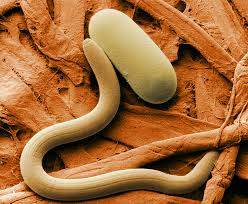 Nematodes-These are microscopic roundworms that eat flea larvae. You can use them in gardens and on lawns to keep the flea population under control. They are applied with a lawn sprayer and can reduce the flea population by 80% in 24 hours. Nematodes are most effective in moist, sandy soil away from direct sunlight. The worms won’t survive in the hot sun. You can purchase these online, at nurseries and some pet stores.
Nematodes-These are microscopic roundworms that eat flea larvae. You can use them in gardens and on lawns to keep the flea population under control. They are applied with a lawn sprayer and can reduce the flea population by 80% in 24 hours. Nematodes are most effective in moist, sandy soil away from direct sunlight. The worms won’t survive in the hot sun. You can purchase these online, at nurseries and some pet stores.
Treating Your Pet- The dangers of chemical sprays, powders, collars, dips, shampoos, etc. far outweigh the benefits unless your pets health or comfort is being compromised. Here are some additional suggestions that are safe and non toxic.
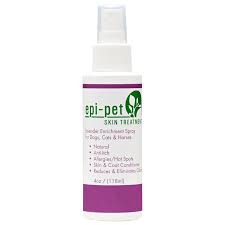 Essential Oil Sprays-These sprays contain lavender, peppermint, geranium, lemongrass and citronella and can be very effective as parasite deterrents. You can purchase these products pre-blended or work with an animal aromatherapist.
Essential Oil Sprays-These sprays contain lavender, peppermint, geranium, lemongrass and citronella and can be very effective as parasite deterrents. You can purchase these products pre-blended or work with an animal aromatherapist.
Fresh Garlic-Fresh garlic can be given to both dogs and cats to prevent internal as well as external parasites. You may need to ask your vet what a safe amount would be for your pets weight.
B Vitamins-Make sure your pet gets plenty of B vitamins, preferably from natural resources, such as raw meat. If you want to use a supplement instead, a whole food B complex vitamin is a better choice than a synthetic variety. Brewers Yeast can be used to bolster vitamin B levels, however many pets are allergic to yeast and yeast products. Don’t use brewers yeast if your pet has allergies.
Ectopamine Spray-This is a relatively new product made from essential oils.
Mercola.com-Dr. Becker


